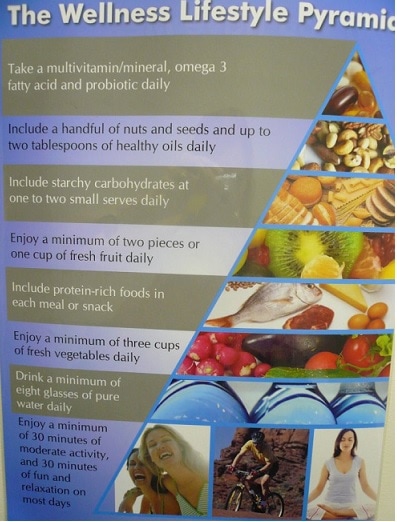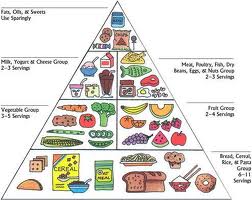The Food Guide Pyramid has come under some harsh criticism in recent years by many scientists, nutritionists and medical researchers. They say it is outdated, gives misinformation, and at worst, can lead to obesity and health problems. How can this be? What is so wrong with this once highly-acclaimed food pyramid?
Faults of the USDA’s Pyramid
According to Harvard scientist Dr. Walter Willett, the food pyramid is not up-to-date with current nutritional research. He states six faults of the food pyramid that are misleading people, and adding to the growing epidemic of obesity. And we agree with him.
The 6 Faults Of The Food Pyramid
1.All fats are bad. NOT TRUE. Only certain fats are bad for you (saturated and trans fats), while others (monosaturated and polyunsaturated fats) provide many benefits to your heart. Some of these good fats are found in nuts, fish, avocados, and olive oil.
2. All complex carbohydrates are good. NOT TRUE. The food pyramid recommends six to eleven servings of carbohydrates a day, which is way too much. It also doesn’t differentiate between the two kinds of carbohydrates: simple carbohydrates (sugars) and complex carbohydrates (starches). The majority of a person’s carbohydrate intake should come from whole grains (complex carbs), which will make you feel fuller longer and give you a lot of fiber as well. Stay away from refined carbohydrates, which are things like cookies, crackers and chips. If you eat those, eat them in moderation.
3. Protein is protein. NOT TRUE. Protein should be a key component of your diet, but some sources of protein are better for you than others. For example, red meat may have a good amount of protein, but it tends to be high in cholesterol and saturated fat, which is not good for your heart. Fish, chicken, turkey and pork are lower in saturated fat, and have just as much protein. Legumes, eggs and nuts are also great sources of protein, as well as fermented products like tofu and tempeh.
4. Dairy products are essential. NOT TRUE. Despite all the commercials advertising protection against osteoporosis, there really isn’t the kind of calcium emergency media would have you believe. The truth is that it’s not clear that dairy products are really the best source of calcium for most people. The Harvard School of Public Health states that “while calcium and dairy can lower the risk of osteoporosis and colon cancer, high intake can increase the risk of prostate cancer and possibly ovarian cancer”. They recommend milk and dairy foods to be limited to no more than one to two servings per day. More won’t necessarily do your bones any good—and less is fine, as long as you get enough calcium from other sources. Calcium-rich non-dairy foods include leafy green vegetables and broccoli, both of which are also great sources of vitamin K, another key nutrient for bone health. Legumes and tofu can also supply calcium.
5. Eat your potatoes. NOT TRUE. Contrary to popular belief, potatoes can be classified as starches, not vegetables. A baked potato increases blood sugar levels and insulin faster and to higher levels than an equal amount of calories from pure table sugar. And french fries are even worse. So, if you are going to eat potatoes, eat them in moderation. They are not all bad, but they are not all good either.
6. No guidance on weight, exercise, lifestyle, and vitamins. While the food pyramid suggests how to plan a healthy diet, it doesn’t mention four other key parts of maintaining a healthy body: the importance of not gaining weight, the necessity of daily exercise, the importance of fun and relaxation, and what you can gain by taking a daily multivitamins or other supplements.
The new health pyramid experts recommend, including us, is this:
If you are striving for optimal health, basing your diet and lifestyle on this food pyramid is a good place to start. To download your copy to stick on the fridge, click here.



